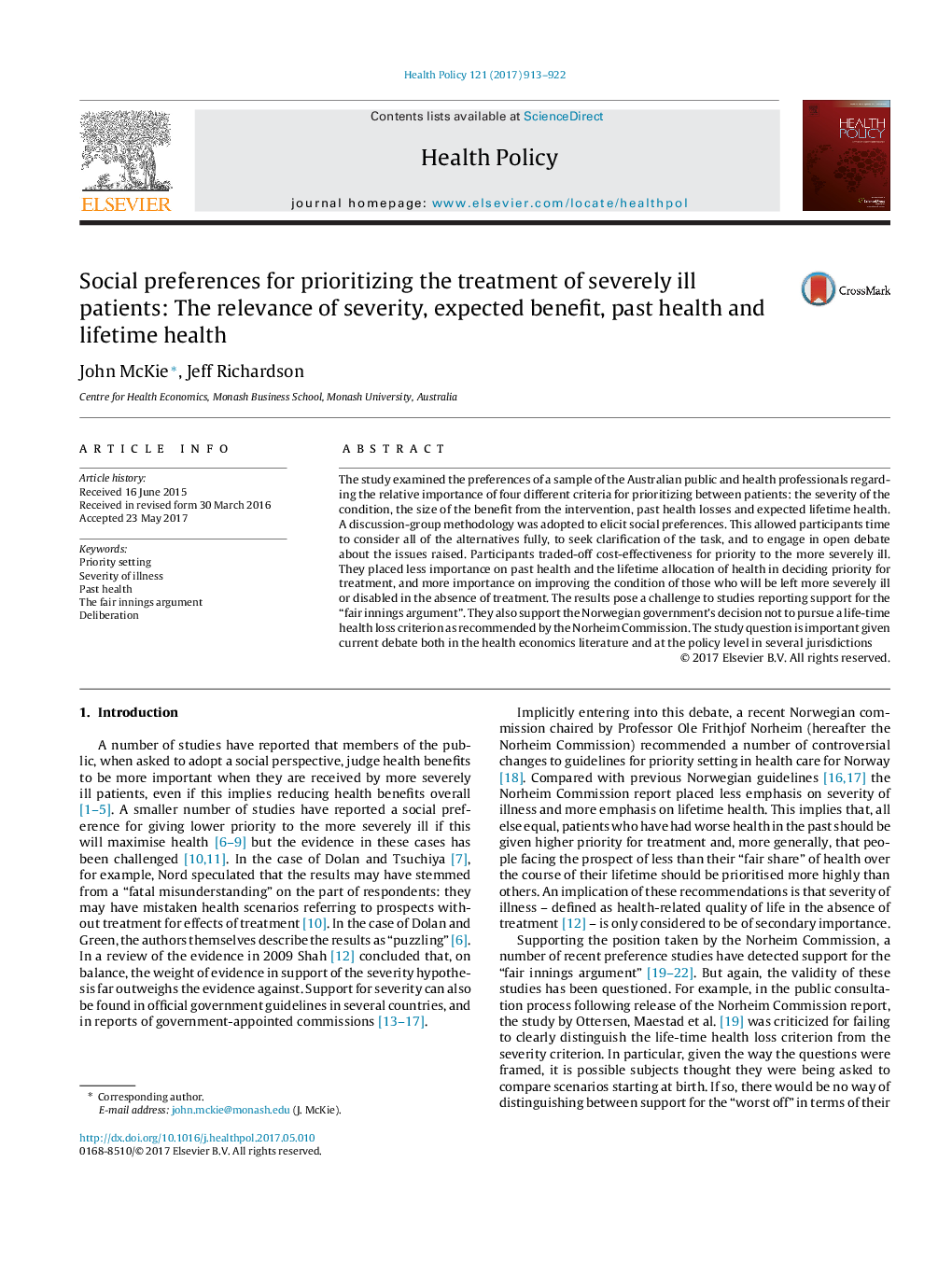| Article ID | Journal | Published Year | Pages | File Type |
|---|---|---|---|---|
| 5723415 | Health Policy | 2017 | 10 Pages |
â¢The paper examines the importance of severity of illness, expected benefit, past health and lifetime health for priority setting.â¢The preferences of sixty-one members of the public and health professionals in Australia were elicited.â¢Respondents traded-off cost-effectiveness for priority to the more severely ill.â¢Respondents placed relatively little importance on past health and the lifetime allocation of health.â¢More importance was placed on improving the condition of those who will be left more severely ill in the absence of treatment.
The study examined the preferences of a sample of the Australian public and health professionals regarding the relative importance of four different criteria for prioritizing between patients: the severity of the condition, the size of the benefit from the intervention, past health losses and expected lifetime health. A discussion-group methodology was adopted to elicit social preferences. This allowed participants time to consider all of the alternatives fully, to seek clarification of the task, and to engage in open debate about the issues raised. Participants traded-off cost-effectiveness for priority to the more severely ill. They placed less importance on past health and the lifetime allocation of health in deciding priority for treatment, and more importance on improving the condition of those who will be left more severely ill or disabled in the absence of treatment. The results pose a challenge to studies reporting support for the “fair innings argument”. They also support the Norwegian government's decision not to pursue a life-time health loss criterion as recommended by the Norheim Commission. The study question is important given current debate both in the health economics literature and at the policy level in several jurisdictions
